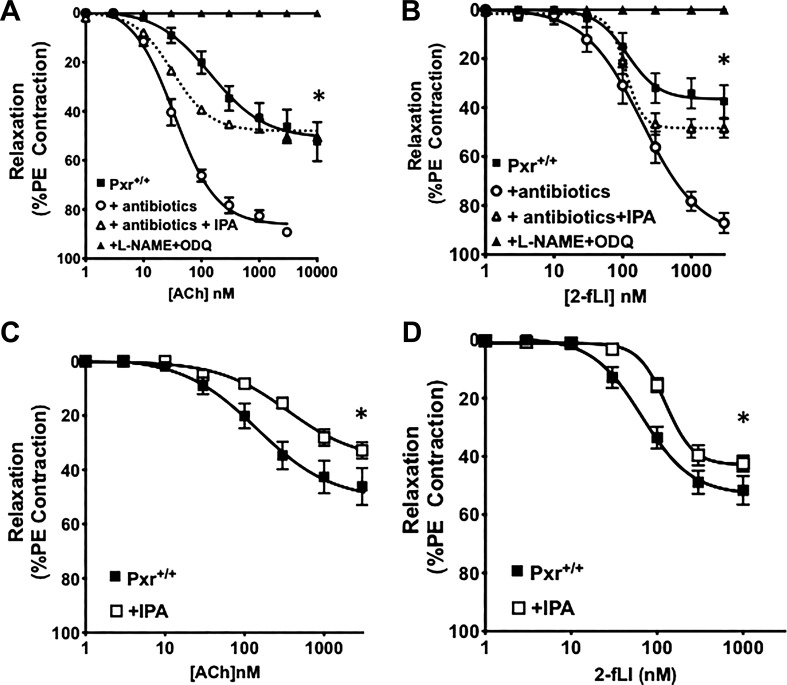Fig. 1.
Broad-spectrum antibiotic treatment sensitizes aorta tissue to agonist-stimulated, endothelium-mediated vasodilation, an effect that can be reversed by administration of indole 3-propionic acid (IPA) in vivo. Concentration-effect curves were obtained for acetylcholine- (Ach; A) and 2-furoyl-Leu-Ile-Gly-Arg-Leu-Orn-amide (2-fLi; B)-induced vasodilation in aorta rings from pregnane X receptor (Pxr)+/+ mice either treated (○) or not (■) with broad-spectrum antibiotics. Antibiotic-treated mice were either supplemented (△) or not (○) with IPA. In all tissues, agonist-stimulated vasodilation was eliminated in the combined presence of Nω-nitro-l-arginine methyl ester hydrochloride (l-NAME) and 1H-[1,2,4]oxadiazolo[4,3,-a] quinoxalin-1-one (ODQ) (▲). C and D: dietary supplementation of microbiome-intact/antibiotic-naive Pxr+/+ animals with IPA (+IPA; □) reduced the vasodilator action of ACh and 2fLI (concentration-effect curves; □) compared with their action in non-IPA-treated mice (■). Data points represent the means ± SE (bars); n = 6 for each group. Two-way ANOVA was used for evaluating the statistical difference between concentration-response curves. *P < 0.05 for differences between tissues from antibiotic-treated vs. nontreated animals (A and B) or for IPA-supplemented vs. nonsupplemented animals (C and D).

